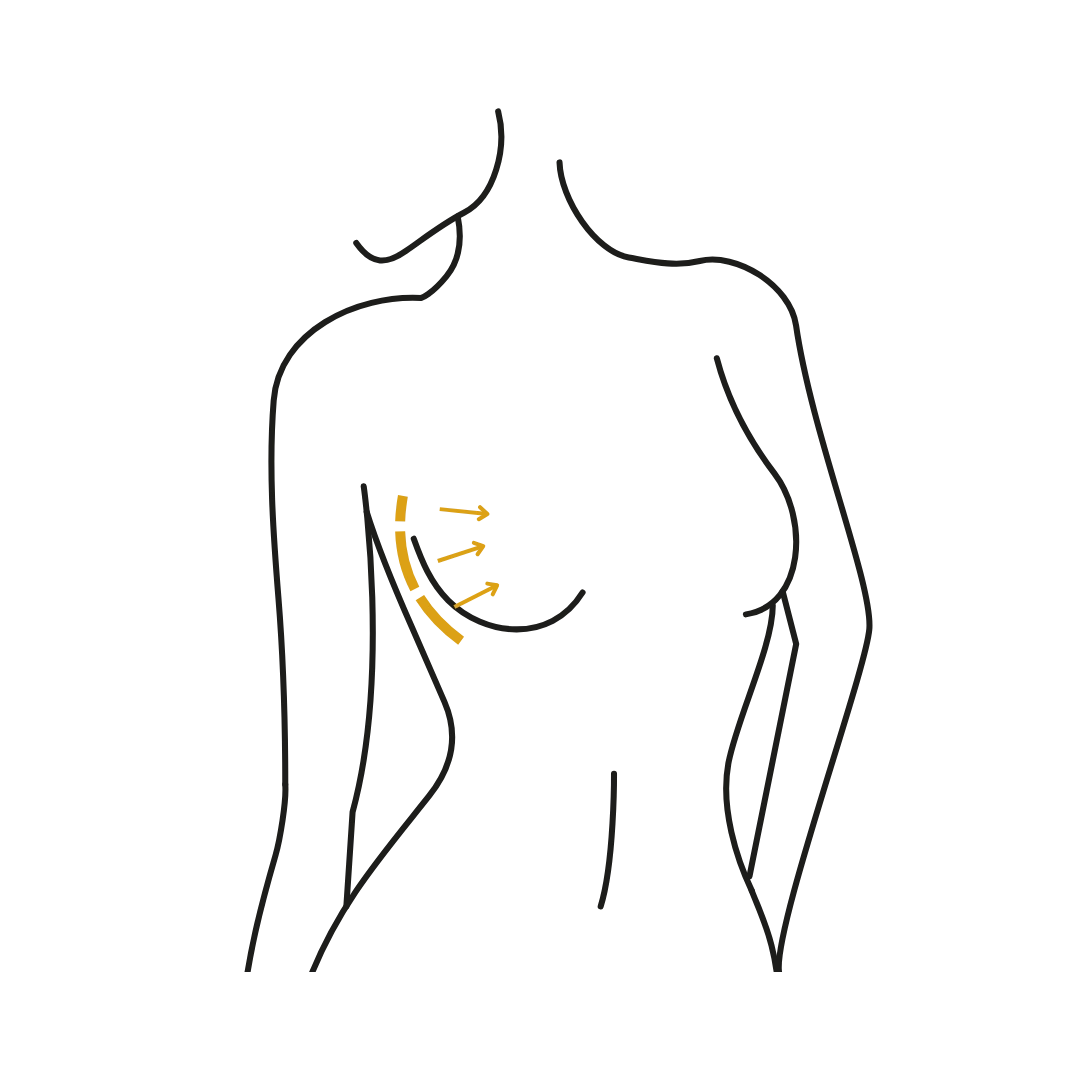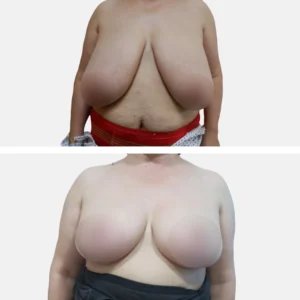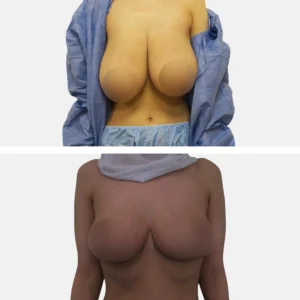

Breast Reduction

About the Surgery:
Overly large breasts at a young age can cause psychological and physical changes associated with hiding the size of the breasts and with finding proper clothing. Also many women after breastfeeding don’t return to normal pre-pregnancy size leaving them with very large breasts that are heavy and give the appearance of being overweight. Most women with very large breasts complain of back and shoulder pain especially with the straps of the bra digging into their skin. Very large breasts can also have negative effects regarding breastfeeding and may delay picking up breast cancer early.
Large breasts can cause problems in many aspects of a woman’s life. When they are larger than the usual standards of attractiveness in our society, the breasts are considered aesthetically displeasing. A full breasted woman may appear heavier than she really is and she may have difficulty obtaining stylish clothing. In some cases, it may even be difficult to find a properly fitting bra. Often, women with large breasts feel very self conscious. Teenagers may not develop proper poise and posture as they try to hide the fullness of their breasts, a subject they are unlikely to discuss freely with their parents.
The actual weight and bulk of the breasts may cause physical problems and symptoms which compound the feeling of unattractiveness. There can be a feeling of uncomfortable fullness, neck or back pain, and shoulder grooving. These symptoms may contribute to limited performance in certain occupations and in sports. Finally, large breasts can also make it difficult to detect lumps or masses, thus complicating cancer detection for both the patient and her physician. This may well be a source of further anxiety in a patient who is already embarrassed about her condition. Because of these medical problems, in many cases, medical insurance may cover some of the cost of breast reduction.
The goal of reduction mammaplasty is to reduce, recontour and reshape the breasts. The breasts are made smaller. The nipple areola complex is repositioned upward, and if indicated, reduced in size. Excess skin and breast tissue is removed from the lower and outer portions of the breast. A preoperative plan is made which allows both the surgeon and the patient to share in the decision as to the proposed size of the breast after surgery. The surgeon will attempt to make the breasts as identical as possible, but some asymmetry may remain. Furthermore, it is not possible to predict exactly how large the breast will finally be after surgery. Healing results in some progressive changes in breast size, since some swelling may be present for several months following surgery.
Incisions are made in the lower breast resulting in three scars: one around the nipple, which usually heals very nicely; a vertical incision from the nipple to beneath the breast, which remains visible; and finally, an incision in the fold beneath the breast. Breast tissue is sculpted using a combination of sharp dissection and occasional liposuction. The nipple remains attached to the underlying breast tissue. The remaining breast is folded around the nipple and its attachments and the incisions are closed. Care is taken to close these incisions as carefully as possible. Nevertheless, patients must realize that scarring is influenced as much by tissue response as by surgical skill, and occasionally, wide scars can form despite an overall pleasing breast shape. Fortunately, with time, these scars do tend to blend into the normal skin, becoming less noticeable.
Although it takes some time for final healing and shaping of the breasts to occur, the initial recovery is typically very well tolerated and easier than expected for most patients. There is some soreness after the operation and pain medicine is sometimes required, but patients usually are fully ambulatory the day after surgery. Generally the patient may return to work five to eight days after surgery, although full activity or extremely vigorous exercise should not be undertaken for four to six weeks.
Video Explanation
FAQ's About the Procedure
Is the procedure conducted in a hospital or at a clinic?
At the Hospital.
How much recovery time (resting at home) is needed?
٧ أيام (هذه الجراحة خالية من أي ألم تقريبا).
The surgical incision and scar?
The incision is anchor shaped, heal very well. Scars may take up to 6 months to become normal skin color.
Operation time?
ساعتين.
Discharge from the hospital?
Same day of surgery.


